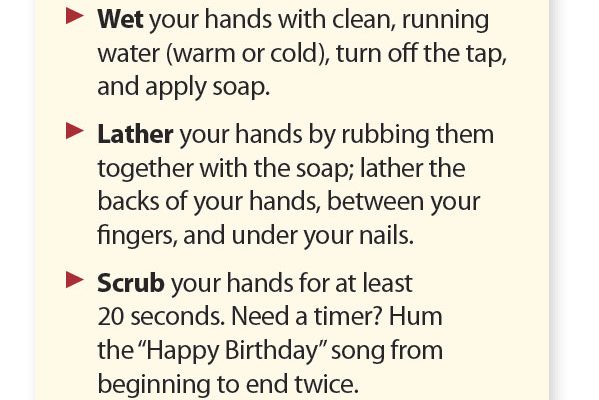How to Prevent Colds and Flu
Most people agree that having a cold or the flu is miserable—and apparently, misery loves company: Many millions of Americans get a cold or the flu each year, according to estimates from the Centers for Disease Control and Prevention (CDC).
Colds and flu are both caused by viruses, microorganisms that invade normal cells and reproduce. If your immune system cannot fight off the virus before it begins changing or damaging healthy cells, you will develop an infection.
Fortunately, there are a number of steps you can take to protect yourself and your family from colds and flu.
Stay Informed
One thing you can do to is be aware of the number of illnesses in your area. If you know that there are high activity levels for colds and flu in your community, you can take extra precautions to avoid infection.
for colds and flu in your community, you can take extra precautions to avoid infection.
Flu surveillance reports for the U.S. are posted weekly on the CDC’s website (https://www.cdc.gov.flu/weekly/). The Weather Channel’s website (https://wxch.nl/2mc1YlI) has a “Cold & Flu Tracker” that provides information about the levels of cold and flu activity in your area based on your ZIP code.
High-Risk Areas
Viruses travel in droplets that go airborne when an infected person coughs, sneezes, or talks. These droplets may remain infectious for several hours; generally, they remain active longer on hard surfaces than on soft surfaces. Some studies suggest that a flu virus may live for 24 hours or longer.
If you are within six feet of an infected person, it’s possible that you can inhale droplets that are expelled. Hand-to-hand contact also increases the chance of infection, as well as touching objects contaminated with the virus, such as utensils, phones, TV remotes, doorknobs, handles and surfaces in bathrooms and kitchens, computer keyboards, light switches, and toys.
Getting Vaccinated
The flu shot provides immunity against several different strains of the influenza virus. Each year, the flu vaccine is formulated to fight off the strains researchers determine are most likely to spread and cause illness.
The ideal time to get a flu shot is late October or early November; any earlier, and you may no longer be immune when flu season peaks. A flu shot reduces your risk of getting the flu, but it doesn’t provide 100 percent prevention.
Strengthen Your Immune System
Diet. Food is the fuel your body needs to keep its organs and systems working properly. Inadequate calorie and nutrient intake is associated with a weaker immune system. The vitamins and minerals that play critical roles in immunity include vitamins A, C, D, E, B6, and B12, folate, zinc, iron, selenium, and copper.
Sources of these nutrients include:
- Salmon, tuna, mackerel, and sardines
- Beans of all types (black, pinto, kidney, navy, white, garbanzo, and lima)
- Spinach, kale, broccoli, Brussels sprouts, and leafy greens
- Carrots, sweet potatoes, winter squash, tomatoes, and red peppers
- Citrus fruits, berries, and avocados
- Walnuts, almonds, and other nuts
- Pumpkin, sunflower, and sesame seeds
Exercise. Some studies suggest that exercising regularly can help ward off cold and flu viruses, and that people with sedentary lifestyles are at higher risk of getting colds. Beyond that, being physically active is associated with many health benefits, including lower blood pressure and cholesterol levels, a lower risk of heart disease, diabetes, and depression, and less stress.
Sleep. The amount and quality of sleep you get can affect your immune system. Research has shown that people who don’t get quality sleep or enough sleep are more likely to get sick after being exposed to a cold virus. While you’re asleep, your immune system produces cytokines, antibodies, and other substances that are involved in fighting viruses. Getting less sleep means a reduced production of these important disease-fighters.
The post How to Prevent Colds and Flu appeared first on University Health News.


